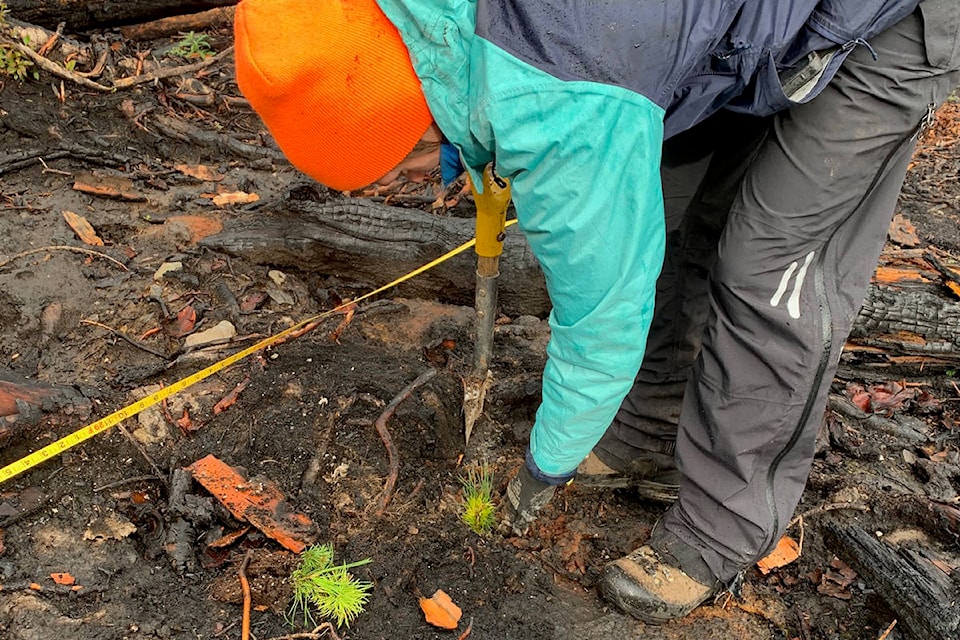Randy Moody, president of the Whitebark Pine Ecosystem Foundation of Canada (WPEFC) and owner of Moody Tree, who’s spent nearly 20 years trying to preserve and promote this endangered tree species, had another big season, planting seedlings grown from seeds collected in 2018.
His group had did a massive cone collection in 2018, and it takes about two years in a nursery to get a seedling, so this year they planted around 13,000 seedlings, primarily in Kianuko Provincial park, as well as a handful of smaller study plots in areas like Hourglass Lake and Manning Park, as well as out near Lillooet.
The Whitebark Pine grows primarily in harsh subapline environments where few other plants can survive. It is a a unique and important species, as it stabilizes soil in these high-elevation areas, creates habitat and provides food for grizzly bears, red squirrels and the Clark’s Nutcracker.
This bird is the only seed distributor for the Whitebark. It collects its seeds to store as a winter food source, but as the bird often collects more than it needs, it forgets these seed stashes in the ground which then grow into new whitebark pines.
The tree faces a number of challenges, despite its hardy nature. These are white pine blister rust, a fungus which was introduced into the ecosystem in around 1906, mountain pine beetles, historic fire suppression and climate change.
“It’s a very interesting species and it’s great ecologically, great landscape, but it’s a challenge,” Moody said. “Not just because the disease, but because of funding and because of where it grows — it’s one of these things where there’s great opportunity and interest and excitement but the challenges are equal.
WPEFC puts a lot of focus on the blister rust, seeking out trees that are less affected by it, collecting seeds from them and then trying to create hybrids out of the healthy trees.
“If you give this rust to every single whitebark pine, every single one will get sick. It’s just to what degree to you get sick. So there’s some that will die within a year, there’s some that’ll persist for a long time with it.”
He said that larger trees are often more resistant to rust, but not necessarily because they have a functional resistance in terms of fighting it better than others, it’s just that they’re bigger harder for the rust to kill.
“That actually presents a real challenge because big trees seem to be healthier, we don’t really know if they’re healthier.”
It’s better then to seek out 80-year-old trees who’ve grown their entire lives under the threat of rust, which has been here for around 120 years.
“Whereas these trees that are 250 years old, they might have been already when rust affected them once, and it doesn’t affect them every year. Even though there’s millions of rust spores produced kind of like from a mushroom, it doesn’t mean trees are getting infected every single year, you need the right environmental conditions and theres a lot of things at play there.”
So they collect seeds from cones out of trees in one year, then it takes two years to grow a seedling big enough to test, which is then exposed to rust. For example there are seedlings from about 30 trees growing in facility in B.C. The seedlings are all exposed to the funguys, then after even more time, they look at which ones survive the best, even though all had some infection happen.
Then, they go back to the best trees and collect more seed from them to then be bred to create, hopefully, more resistant seedlings.
They also have ways of speeding up this process.
